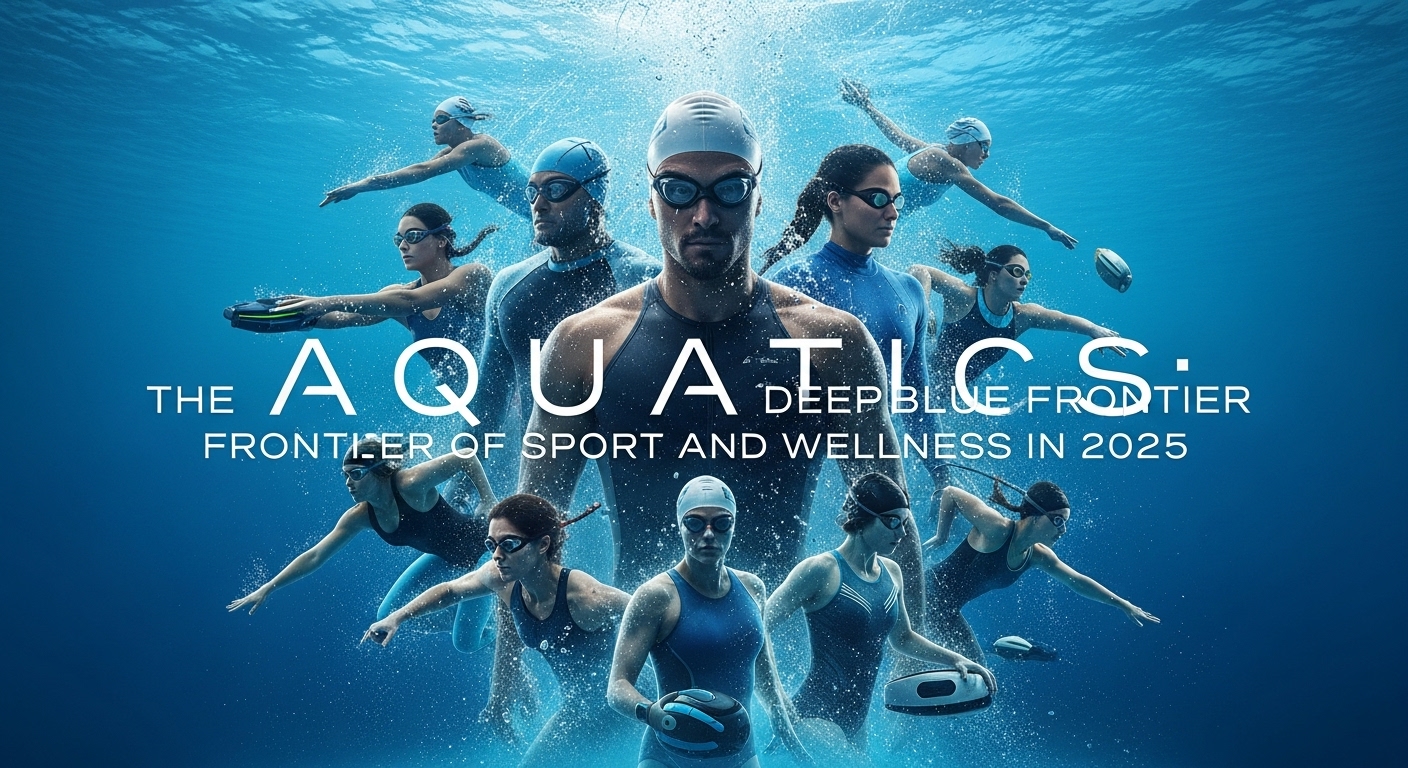From the serene glide of a swimmer cutting through water to the explosive splash of a diver, and the intense teamwork of water polo, “aquatics” encompasses a dynamic array of sports and activities performed in or on water. Beyond their competitive allure, aquatic pursuits offer unparalleled benefits for physical and mental well-being, driving innovation in training, equipment, and sustainability. As of mid-2025, the world of aquatics is embracing new technologies and a renewed focus on accessibility, making it more engaging and beneficial than ever.
The Diverse Depths of Aquatic Disciplines
Governed internationally by World Aquatics (formerly FINA), the aquatic world is rich with specialized disciplines:
- Swimming: The foundational aquatic sport, focusing on speed and endurance using various strokes (freestyle, breaststroke, backstroke, butterfly) over diverse distances. This includes both pool swimming and challenging open water swimming events.
- Diving: A breathtaking display of acrobatics and precision, where athletes perform intricate dives from springboards or high platforms, judged on execution, synchronization (in synchronized diving), and degree of difficulty.
- Artistic Swimming (formerly Synchronized Swimming): A captivating blend of grace, strength, and synchronized choreography, performed solo, in duets, or by teams, accompanied by music. It demands exceptional breath control, flexibility, and artistry.
- Water Polo: A fast-paced, physically demanding team sport played in a pool, combining elements of swimming, soccer, and handball. Teams aim to score by throwing the ball into the opponent’s goal.
- High Diving: An extreme sport where athletes plunge from heights of up to 27 meters (men) and 20 meters (women), showcasing incredible courage and aerial mastery.
- Open Water Swimming: Endurance swimming races conducted in natural bodies of water like oceans, lakes, or rivers, often over long distances (e.g., 10km marathon swims).
Beyond these core disciplines, aquatics extends to activities like Finswimming (using specialized fins), Underwater Hockey, Canoe Polo, and various water sports like surfing, wakeboarding, and stand-up paddleboarding, all contributing to a vibrant water-centric lifestyle.
A Legacy in the Water: From Prehistoric Times to Olympic Gold
Swimming has been recorded since prehistoric times, with evidence of its practice dating back to Stone Age paintings from around 7,000 years ago. Ancient Egyptians, Assyrians, Greeks, and Romans all incorporated swimming into their cultures, often for martial training or as part of education. Competitive swimming emerged in the early 1800s in England, and by 1896, it was part of the first modern Olympic Games. Diving and water polo followed shortly after, with artistic swimming gaining Olympic status much later. The international governing body, FINA, was formed in 1908 and rebranded as World Aquatics in January 2023.
The Health and Wellness Tsunami: Benefits of Aquatic Activities
Engaging in aquatic sports offers a remarkable array of benefits for both physical and mental well-being, making them popular for all ages and fitness levels:
- Cardiovascular Health: Swimming is an excellent full-body cardio workout, strengthening the heart, improving circulation, and lowering blood pressure.
- Muscle Strength and Endurance: The natural resistance of water engages all major muscle groups, building strength and endurance with a lower risk of strain compared to land-based exercises.
- Low-Impact Exercise: Water buoyancy reduces stress on joints and bones, making aquatics ideal for individuals with arthritis, injuries, or those seeking a gentle yet effective workout.
- Enhanced Flexibility and Balance: Dynamic movements in water improve range of motion and coordination.
- Stress Reduction and Mental Clarity: The soothing nature of water and rhythmic motions promote relaxation, reduce anxiety, and can create a meditative state, improving mood and sleep quality.
- Weight Management: Aquatic activities burn a significant number of calories, aiding in weight loss and maintenance.
Aquatics in 2025: Key Trends and Future Waves
As of mid-2025, the world of aquatics is experiencing exciting advancements:
- Technological Integration in Training:
- Smart Goggles and Wearables: High-tech swim goggles with integrated displays provide real-time metrics (lap count, split times, heart rate, stroke rate). Wearable devices offer advanced data analytics on stroke efficiency, technique, and overall performance, enabling highly personalized training.
- AI-Powered Feedback: AI algorithms are analyzing swim strokes and dives from video footage, providing precise feedback on body alignment, drag reduction, and optimal movement patterns, helping athletes refine their technique with unprecedented accuracy.
- Underwater Tracking Systems: Advanced in-pool systems use cameras and sensors to track swimmer movements and detect signs of distress, enhancing both performance analysis and safety.
- Sustainability in Aquatic Facilities: There’s a clear trend towards eco-friendly pools. More facilities are adopting saltwater or UV filtration systems, reducing reliance on traditional chlorine. Energy-efficient pumps, solar heating, and water-saving technologies are becoming standard, reflecting a global commitment to environmental responsibility. Natural pools using plants for filtration are also gaining popularity.
- Enhanced Spectator Experience: Broadcasters are leveraging new camera angles, underwater drones, and AR overlays to provide more dynamic and informative views of races and routines, bringing the nuances of aquatic sports to life for viewers.
- Accessibility and Inclusivity: The design of aquatic facilities is becoming more inclusive. Zero-entry pools (gradual entry without stairs) and advanced pool lifts are making water activities accessible to individuals with mobility issues. Programs for those with physical and developmental disabilities are expanding, ensuring everyone can enjoy the benefits of water.
- Hybrid Activities and Multi-Functional Pools: Homeowners and recreational centers are opting for multi-purpose pools with features like built-in resistance jets for workouts, in-pool loungers for relaxation, and integrated fire/water features for ambiance. Activities like aquajogging, aqua aerobics, and aqua yoga continue to grow for fitness and rehabilitation.
- Mental Training Emphasis: Mental preparation, including visualization techniques and mindfulness exercises, is increasingly integrated into swimmer and diver training programs to enhance focus, manage pre-competition anxiety, and improve overall performance.
Major Aquatic Events in 2025-2026
The coming years will showcase the pinnacle of aquatic competition:
- 22nd World Aquatics Championships (Singapore): July 11 – August 3, 2025. This premier event features swimming, artistic swimming, diving, high diving, water polo, and open water swimming, with top Olympic champions competing for titles.
- World Aquatics Masters Championships (Singapore): July 26 – August 22, 2025.
- World Aquatics Swimming World Cup 2025: A series of stops in cities like Carmel and Westmont (USA), and Toronto (Canada) in October 2025.
- Olympic Winter Games (Milan and Cortina d’Ampezzo, Italy): February 6 – 22, 2026, featuring various winter aquatic-adjacent sports like ice skating.
Aquatics, with its profound health benefits, diverse disciplines, and continuous embrace of innovation, is poised for sustained growth. As technology enhances performance and access, and as communities worldwide recognize the therapeutic and competitive power of water, the deep blue frontier of aquatic sports will continue to make waves.

